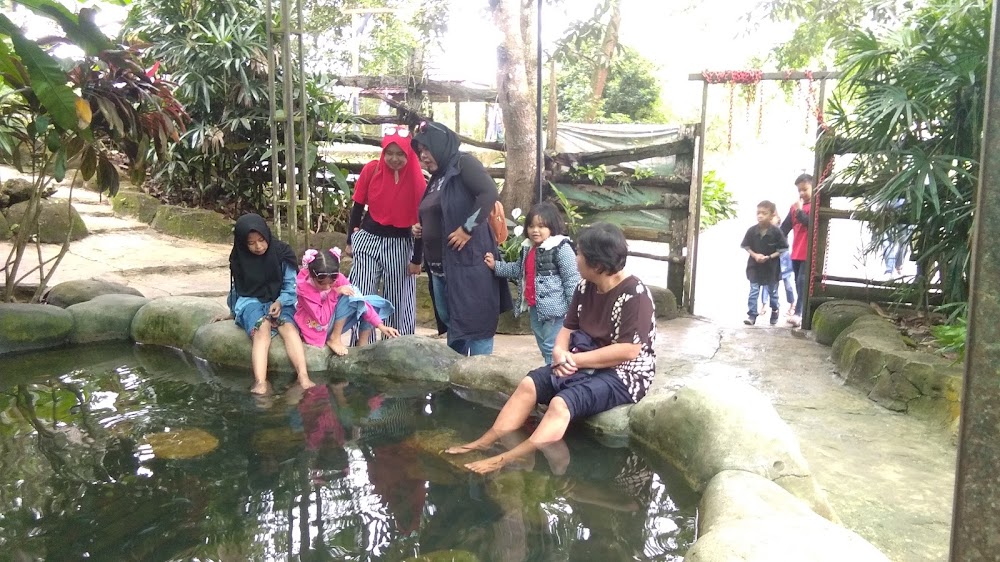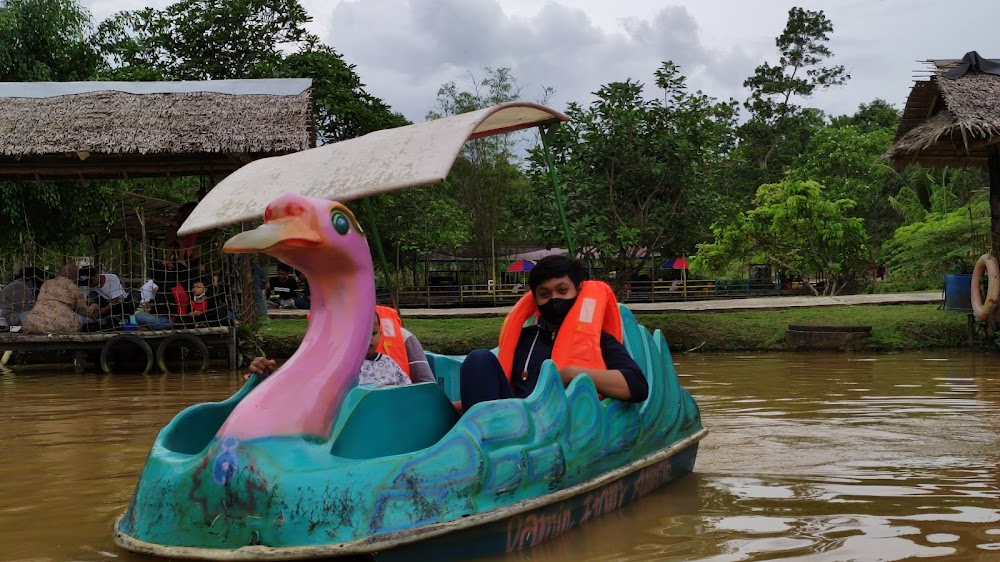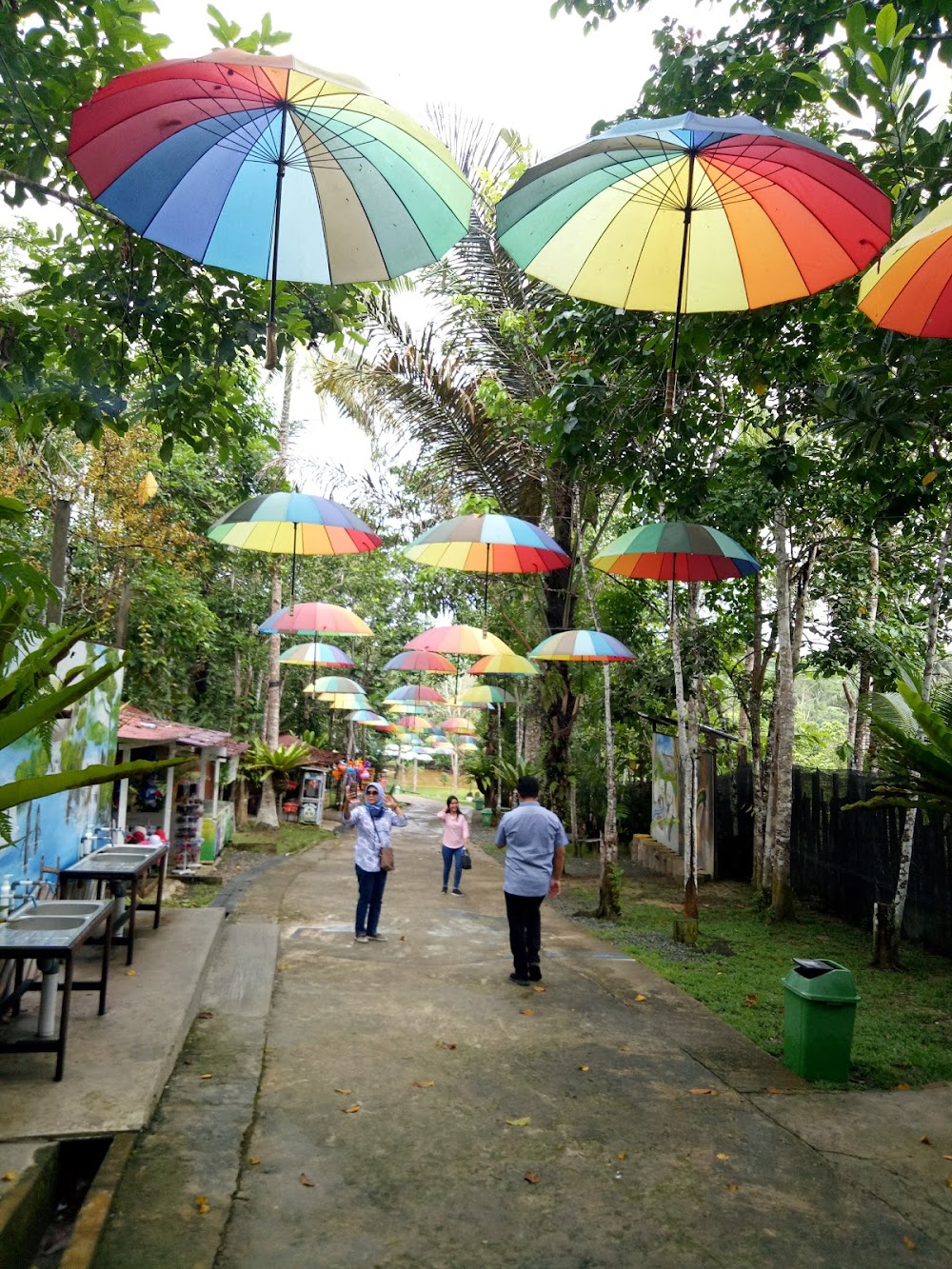Lamin Etam Ambawang (Lamin Etam Ambawang)
Overview
Lamin Etam Ambors: A Cultural Gem of the Dayak Community
Lamin Etam Ambors, also referred to as Lamin Etam Ambawang, is an extraordinary traditional longhouse located in Kalimantan Selatan, Indonesia. This architectural marvel stands as a revered symbol of Dayak culture, the indigenous people of Borneo, reflecting their rich heritage and deep-rooted traditions.
An Architectural Marvel
This impressive longhouse is not only remarkable for its expansive size but also for its intricate design and craftsmanship. Constructed from local materials such as ironwood and bamboo, Lamin Etam Ambawang exemplifies the creativity and resourcefulness of the Dayak people. Ironwood, known locally as ulin wood, is highly valued for its strength and resistance to termites, making it an ideal choice for building durable structures in the humid, tropical climate of Kalimantan Selatan.
A Community Endeavor
The construction of Lamin Etam Ambawang is a communal effort that involves meticulous planning and hard labor. The process begins with the careful selection and felling of ironwood trees, which requires permission from village elders and spiritual leaders to ensure a harmonious relationship with nature. Once harvested, the wood is transported to the construction site, typically nestled on a cleared plot near a river, which provides essential water and transportation resources.
The longhouse's framework is first erected, with robust ironwood beams forming the skeleton of the structure. These beams are connected through traditional mortise and tenon joints, creating a secure and stable framework without the use of metal nails or screws. After the frame is complete, the floors and walls are constructed using split bamboo, woven bamboo mats, and wooden planks. The elevated design of the longhouse, perched on tall stilts, protects it from floods, pests, and wildlife while allowing for natural ventilation to keep the interior cool.
Masterful Roofing
The roof of Lamin Etam Ambawang is a testament to traditional craftsmanship. Typically made from sago palm leaves, it is skillfully arranged to form a waterproof covering capable of withstanding the heavy rains that frequently occur in the region. The leaves are bound together with rattan, a flexible and durable material that thrives in Borneo’s jungles.
A Symbol of Community Life
Inside the longhouse, the space is thoughtfully divided into various sections to accommodate the community's needs. The central area serves as a communal living space where families gather to socialize, share meals, and conduct ceremonies. Smaller rooms along the sides provide private quarters for individual families, while a raised platform at one end of the longhouse serves as a sacred space for rituals and the storage of treasured heirlooms.
Artistic Expressions
The decorations and carvings that adorn Lamin Etam Ambawang are rich in symbolism and cultural significance. Ornate wooden carvings, known as ukiran, depict scenes from Dayak mythology, featuring protective spirits and ancestral figures. These artistic elements not only enhance the beauty of the longhouse but also serve as a poignant reminder of the community's heritage and traditions.
A Living Cultural Heritage
Lamin Etam Ambawang is more than just a residence; it is the heart of the Dayak community—a space where history and contemporary life intersect. It stands as a testament to the skill and artistry of the Dayak people, reflecting their profound connection to the land and their cultural identity.
In recent years, initiatives have been undertaken to preserve and promote Lamin Etam Ambawang as a cultural landmark. Local and regional governments, along with cultural organizations, have collaborated to restore and maintain the longhouse, ensuring its status as a vibrant and living symbol of Dayak heritage. Cultural festivals and guided tours are organized, allowing visitors to immerse themselves in the beauty and significance of this remarkable structure.
Preserving Traditions
Today, Lamin Etam Ambawang continues to play a crucial role in the life of the Dayak community in Kalimantan Selatan. It is a place where traditions are cherished, generations unite to celebrate their shared heritage, and the harmonious relationship between people and nature is honored.
In this extraordinary longhouse, the legacy of the Dayak people endures, serving as a beacon of cultural pride and resilience for all who call Kalimantan Selatan home.









